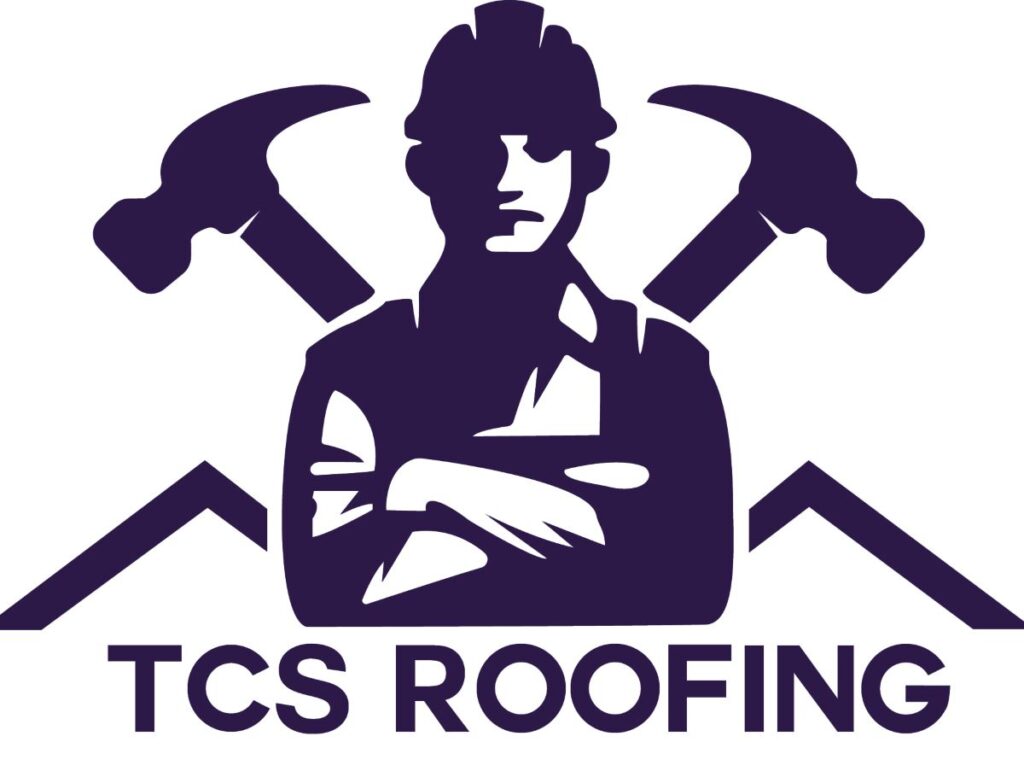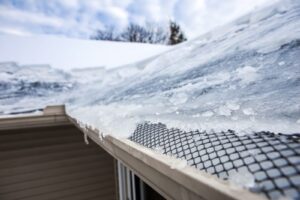Your roof system is a major investment, providing years of protection from the elements and helping to ensure a comfortable living environment for you and your family. But, just like many components of your home, it needs regular maintenance to perform at its best.
ROOF MAINTENANCE CHECKLIST
We’ve compiled a list of annual and semiannual tasks to help keep your asphalt shingle roof in good condition throughout its lifetime. Many of the items on this list won’t take much time to perform, and like any seasonal chore, can help to save time and money down the road.
11 Chores to Help Maintain Your Roof
The 11 roof maintenance chores can be divided into three categories:
- Seasonal Roof Care
- Regular Inspections
- Smart Practices
Roof Work Safety
Safety should be your first priority before starting any roof work. Some maintenance chores must be completed from inside the attic or from a ladder. Hiring a roofer is often the best way to ensure the job gets done right without endangering you or a family member. Roofing contractors are familiar with roof hazards and can spot problem areas that a DIYer might overlook.
Minimize Roof Traffic
Asphalt shingles are covered with tiny granules that help prevent UV degradation while adding a three-dimensional color element to the surface. Unfortunately, too much foot traffic can scuff off granules. It’s also possible to catch the edge of a shingle when walking on the roof, causing it to lift or crack. Because of this, it’s best to limit the number of roof walks.
SEASONAL ROOF CARE – EVERY FALL
1. CLEAN GUTTERS
Your gutter system is designed to collect water runoff from your shingles and direct it away from the foundation. When gutters become clogged, water can back up underneath your shingles and overflow onto your siding or brick.
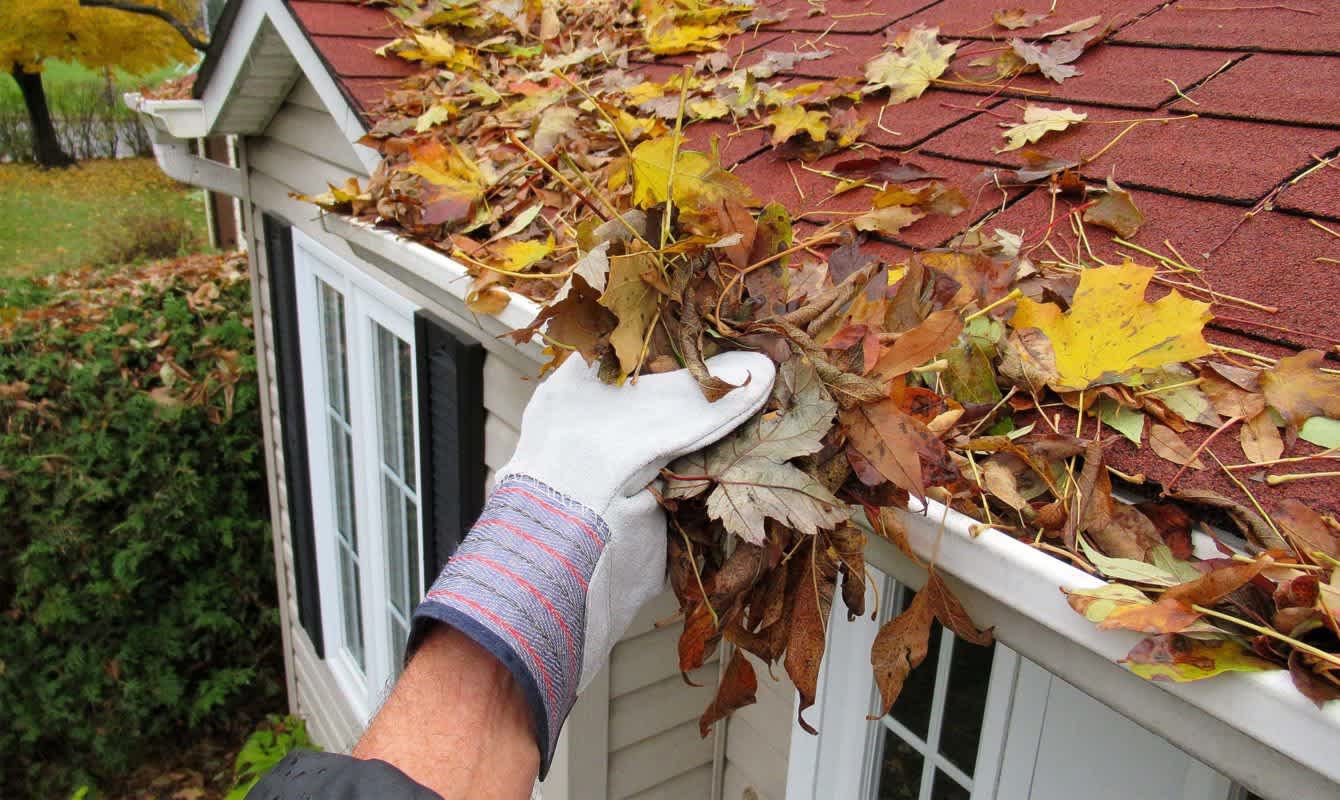
Keep your gutters clean and free-flowing, and make sure they’re securely attached. Pay special attention to areas where the gutter meets the wall at right angles.
You might need to install kick-out flashing or gutter splash guards in vulnerable areas.
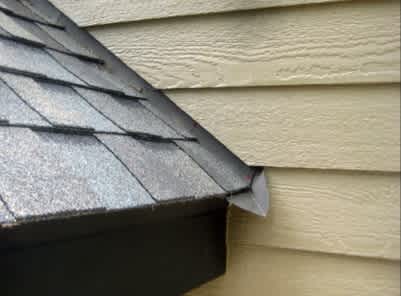
Kick-out flashing
2. LIMIT MOSS & ALGAE GROWTH
Environmental factors can contribute to moss and algae growth on your roof, including a north-facing roof (if you live in the northern hemisphere), lots of shade trees and a wet climate. Moss absorbs water, and large clumps of moss growing on your roof can damage shingles by raising the shingle edges and exposing the undersides to water.
Algae can leave ugly dark streaks on a roof’s surface. Algae stains can be minimized with a solution of chlorine bleach and water. If your roof’s environment is conducive to moss or algae, your best solution may be regular treatments.
PRO TIP: StreakGuard™ Algae Resistance Protection on Owens Corning® shingles is made possible by using a specialized copper-lined granule from 3M, a leading producer of roofing granules.
3. REMOVE NEARBY TREE BRANCHES
Similar to the potential problems from walking on a roof, trees can disturb roof granules by rubbing against shingles, especially during windstorms. Trim branches as much as necessary so that even on the windiest of days, they aren’t touching your roof or gutters.
4. CLEAR OFF ORGANIC DEBRIS
Trees provide shade in the summer and add beauty to your landscape. Unfortunately, they’re a constant source of debris, from maple leaf helicopters in spring to fallen leaves in autumn. Organic matter can absorb water, causing your shingles to remain in contact with moisture for lengthy periods. In addition, when rainwater runs down your roof, it can pick up debris, leaving it to settle in your gutters.
Remove organic residue from your roof at least twice a year or more, depending on your region’s tree activity. You may be able to gently remove the debris with a broom or leaf blower depending on roof access, for example, from an upstairs window.
Remember, don’t use a tool that would rub the shingles’ surface because it could dislodge granules.
ROOF CHECK-UPS
Your roof may have been a perfect defense against the elements when it was brand new. But over time, weathering and natural aging can affect even the best of designs. That’s why it’s good practice to inspect vulnerable areas periodically.
5. MAKE SURE NEARBY WALL CLADDING AND WINDOWS ARE WATERTIGHT
After a major rainstorm or extended period of precipitation, it’s a good policy to check the exterior of your home. Look for areas that remain moist or show streaks of wetness. You might have gutter or soffit problems, causing water to cascade down your walls rather than the downspouts.
Also, check your windows; look around the sills and casings for warping or loss of caulk. These are all areas that can lead to moisture infiltration.
6. INSPECT FLASHING
Flashing helps ensure a watertight seal in areas where two roof planes meet. For example, you might find flashing where your chimney or vent pipes emerge. Flashing is often placed in roof valleys – the channel created when two roof slopes converge.
Find a safe, comfortable vantage point to view flashing, perhaps a second-story window. If you see that the flashing is rusted, dented, missing fasteners or the sealant is rotting away, you may want to contact a roofing contractor. They can inspect the flashing in greater detail to see if a repair or replacement is necessary.
7. EXAMINE THE SOIL STACK
Some vent pipes are sealed with a rubberized gasket. Over time the gasket itself or the accompanying sealant can dry out and fall apart. Periodically, check that all roof penetrations are sealed tightly against the elements.
Again, if you notice this from a safe vantage point, call a contractor to get an official inspection.
8. BEWARE OF ICE DAMS
Snow on the roof and cold temperatures could bring an increased risk of ice dams.
Ice dams form when rooftop snow melts (due to sun exposure or heat transfer from the roof deck), trickles down your roof and then refreezes over the eaves.
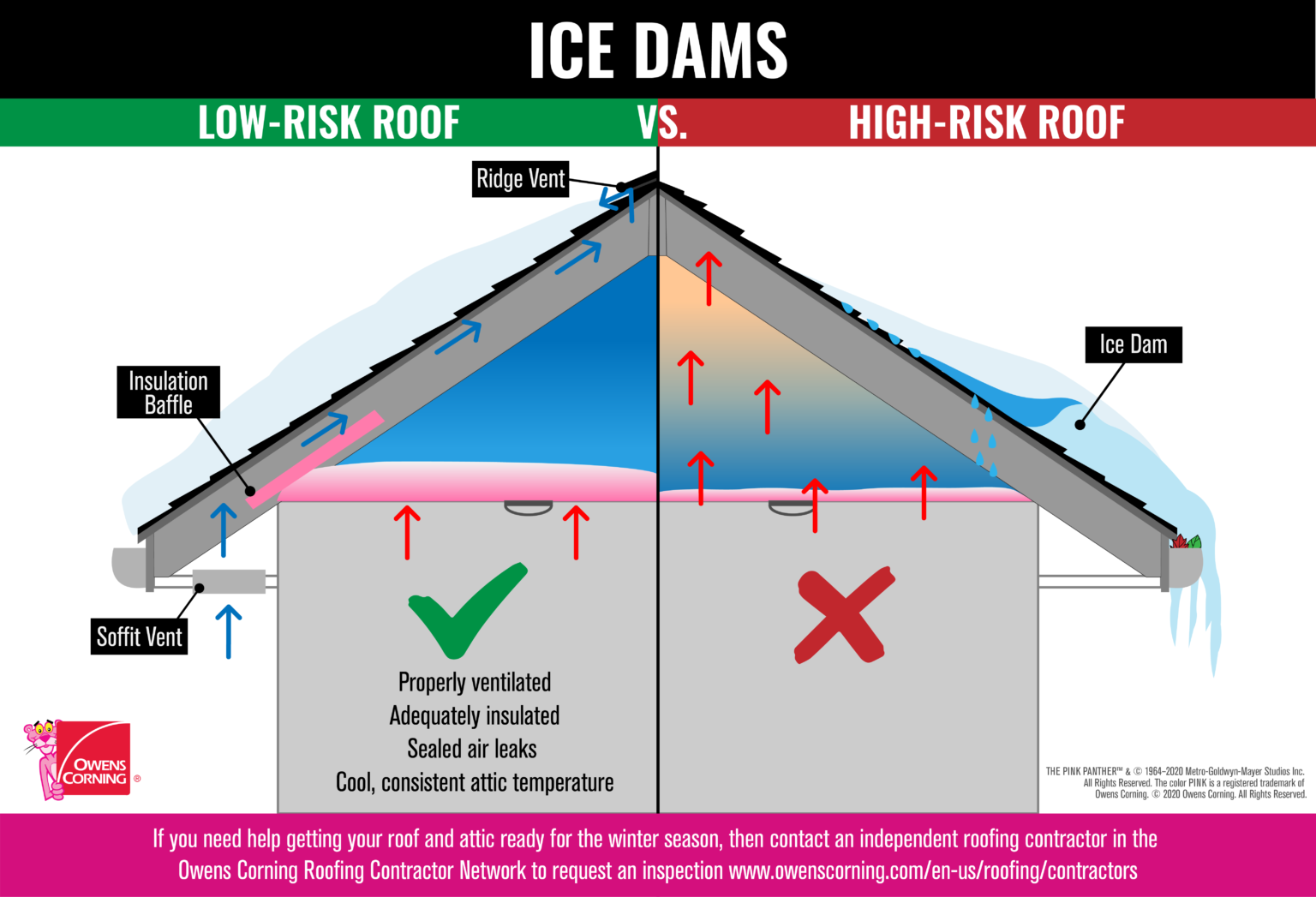
Eventually, the snowmelt has nowhere to go, and it begins to pool on the shingle surface. This can lead to shingle degradation and water infiltration into the roof deck.
However, your best option is to have a professional check your attic for adequate ventilation and insulation. Balanced attic ventilation and adequate insulation can help limit ice dam buildup.
- A balanced attic ventilation system permits moisture-rich warm air to exit via exhaust vents (typically placed high along the roof ridge) and allows cooler dry air to take its place (thanks to intake vents along the soffits).
- Properly placed attic insulation helps prevent heat transfer from the conditioned spaces of your home into the attic.
Ice and Water Barriers
To further seal your roof against moisture infiltration from ice damming, consider using an ice and water barrier product that adheres to the roof deck directly beneath shingles.
Ice and water barrier products are a critical part of the Owens Corning Total Protection Roofing System® and a practical solution if you’re looking to replace your roof and live in a region with severe winter weather.
SMART ROOFING PRACTICES
9. CONFIRM OPEN VENTILATION
Proper ventilation is a key concept in the Owens Corning Total Protection Roofing System®. Replacing warm, humid attic air with cool, dry air helps defend against mold and mildew in the attic and ice dams on the roof.
Check the following to help ensure intake and exhaust ventilation vents are working correctly.
- In the attic spaces: Make sure airflow is not blocked from insulation, stored items or insect hives, including the pathway up to the exhaust.
- Soffits: Check soffit screens are free of debris and paint.
PRO TIP: Owens Corning’s Raft-R-Mate® Attic Rafter Vents fit neatly between rafters, offering space for air to flow freely and preventing accidental blockage of soffit vents.
10. CONNECT DRYER AND BATHROOM VENTS DIRECTLY TO THE OUTSIDE
It’s essential that the moisture-laden air from dryers and bathrooms makes it out of your home. In new construction, building codes require outdoor venting.
If you’ve purchased an older home, make sure that fans aren’t venting into attics or crawlspaces. Adding warm, humid air to an attic or crawlspace can lead to mold and mildew problems.
Periodically check your dryer hoses or ducts to make sure they’re crack-free and securely attached.
11. AVOID DOWNSPOUT DISCHARGE ON ROOF
Downspouts that travel from one level of your home’s roof to another should cover the entire span. Make sure the upper downspout connects to a lower-level gutter. This avoids runoff flowing over the same section of your roof every time it rains, which can lead to dislodged granules and algae stains.
Dislodged granules can prematurely age shingles. Without their protective granule coating, shingles experience increased UV exposure, making them more prone to warping and cracking.
PRO TIP: Make sure all the water discharge from the roof is flowing away from the foundation of your home.
REGULAR ROOF MAINTENANCE
A properly installed asphalt shingle roof is a beautiful, reliable system that should last for years. You can help protect your investment with regular maintenance; however, eventually, you may notice small warning signs that its time is coming to an end.
